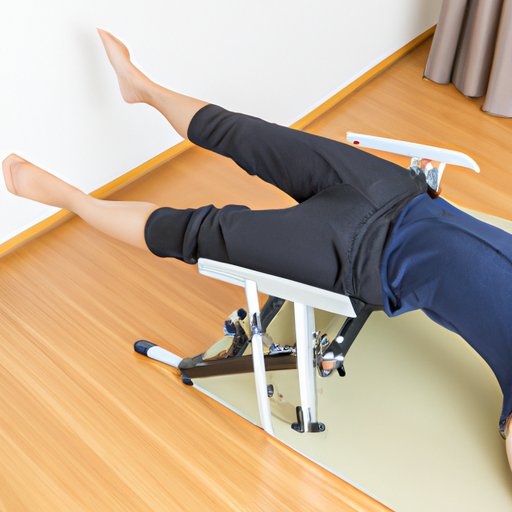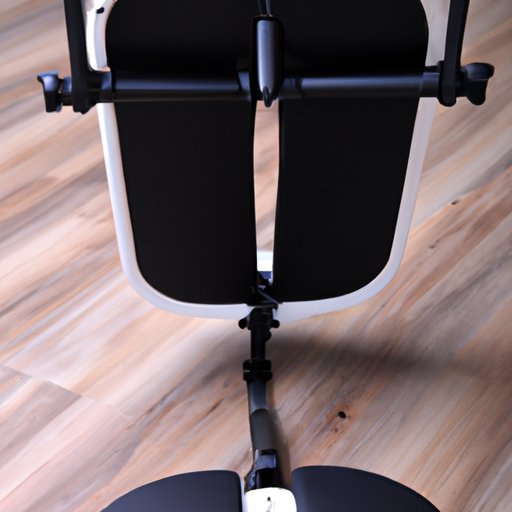Introduction
Inversion tables are a type of exercise and therapy device that has become increasingly popular over the years as a way to help alleviate back pain, improve circulation, reduce stress, and more. But what exactly are inversion tables and are they really good for you? In this article, we’ll explore the benefits, risks, and different types of inversion tables so you can decide if it’s the right choice for you.
Overview of Inversion Tables
An inversion table is a piece of fitness equipment designed to help stretch and relax the spine and muscles in your back. It works by inverting the user at various angles, allowing gravity to decompress the spine and provide relief from pain. The user is usually harnessed into the table with a belt or other support device to ensure safety.
Benefits of Using Inversion Tables
Using an inversion table can have many positive effects on your body. According to the American Chiropractic Association, inversion therapy can help reduce back pain, improve posture, increase flexibility, and reduce stress. Additionally, research has shown that regular use of inversion tables may help decrease inflammation, improve circulation, and even improve mental clarity.

How to Use an Inversion Table
When using an inversion table, it’s important to take certain precautions to ensure you get the most out of your experience. First, make sure the table is properly set up and adjusted to fit your body. Then, slowly lower yourself onto the table until you’re comfortable. Start with a small angle of inversion (around 15-20 degrees) and gradually increase the angle as you become more comfortable. Make sure to keep your head and neck supported throughout the process.

Best Practices for Maximum Benefit
To get the most benefit from an inversion table, it’s important to practice proper form and technique. Don’t go too deep into the inversion – aim for around 60 degrees or less. Also, focus on keeping your core engaged and maintain a neutral spine position throughout the entire movement. Finally, be sure to practice breathing exercises while inverted to help relax your body and mind.
Is Regular Inversion Table Use Safe?
In general, inversion tables are considered safe when used correctly. However, there are some potential risks involved, so it’s important to be aware of them before using an inversion table. People with high blood pressure, heart conditions, glaucoma, or any other serious medical conditions should not use an inversion table without consulting their doctor first.
Safety Tips
If you decide to use an inversion table, it’s important to follow some basic safety tips. Make sure the table is stable and secure before getting on it. If you experience any dizziness or lightheadedness while inverted, immediately stop and come down slowly. Additionally, don’t stay inverted for more than two minutes at a time and always start with a shallow angle of inversion. Lastly, never attempt to do any advanced poses or tricks on an inversion table.
Different Types of Inversion Tables and Their Uses
Inversion tables come in a variety of shapes and sizes, each with its own unique benefits. Gravity boots are a great choice for those who want to focus on stretching and strengthening the lower body. Inversion chairs are ideal for those looking for a gentler approach to inversion therapy. And inversion tables are the best option for those looking for a full-body workout.

The Pros and Cons of Owning an Inversion Table
Owning an inversion table can have both advantages and disadvantages. On the plus side, owning an inversion table can save you money in the long run since you won’t have to pay for gym memberships or physical therapy appointments. Additionally, it can be convenient and easy to use since you can do it at home whenever you want. On the downside, inversion tables can be expensive and take up a lot of space.
Conclusion
Inversion tables can be a great way to relieve back pain, improve posture, reduce stress, and more. But it’s important to understand the benefits, risks, and different types of inversion tables before deciding if it’s the right choice for you. By following the safety tips outlined in this article, you can enjoy all the benefits of using an inversion table without any of the risks.
(Note: Is this article not meeting your expectations? Do you have knowledge or insights to share? Unlock new opportunities and expand your reach by joining our authors team. Click Registration to join us and share your expertise with our readers.)
